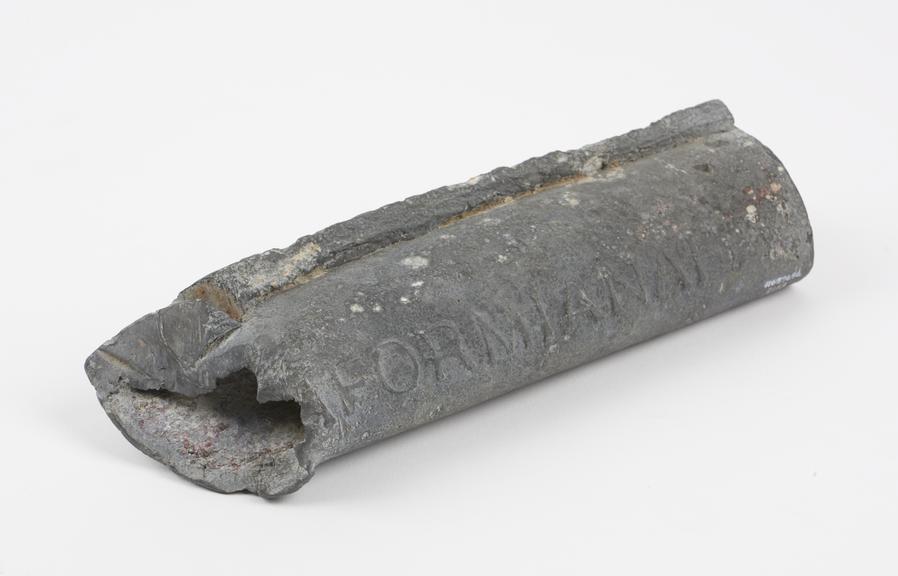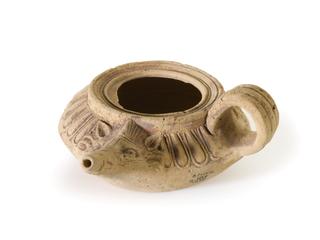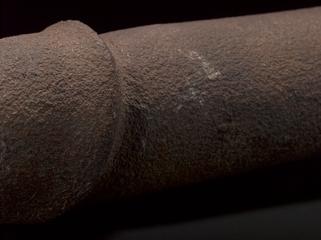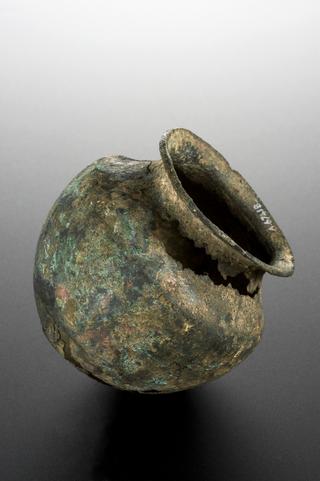
Piece of Roman lead piping inscribed FORMIANA
- Made:
- 101-200 CE in Rome

Piece of Roman lead piping inscribed FORMIANA, owner of the factory where it was made, Roman, c. 2nd century AD
In Roman times, lead pipes were extensively used to supply cities and towns with water. They typically presented the name of the manufacturer, owner, or emperor ruling at the time, but other information could also be included. This fragment is stamped with the word “FORMIANA”, name of manager or owner of the lead workshop where the pipe was made.
The use of lead pipes was so common that the English word plumber derives from the Latin word for lead, plumbum.
Nowadays, lead is known to be toxic. The Romans experienced severe health problems caused by lead poisoning, and they had some awareness of its risks: architect and engineer Vitruvius warned people against its use in his treatise "De Architectura", although later in the volume he describes several designs for lead water conduits.
For long time lead water pipes were believed to be responsible for the Romans’ ills, but new studies suggest that running water, while contaminated, did not contain enough of the metal to cause significant harm. This was due to two factors. First, the water in the pipes was always flowing, meaning it did not stay there long enough to become seriously polluted. Moreover, the water feeding Rome’s main aqueducts had a high content of calcium carbonate, which quickly built up on the insides of pipes preventing the water from touching the lead.
Then why were the Romans affected by lead poisoning to such an extent? It could have been a combination of factors. Lead was widely used in the production of pots and cookware, cosmetics, in winemaking as well as a contraceptive for birth control.
Ingesting the metal was especially toxic. Nevertheless, the Romans widely consumed a form of lead-based artificial sweetener, lead acetate, mainly used in wine. This product was made by boiling unfermented grape juice in lead-alloy pots, which caused the lead in the cookware to react with the acetate ions in the grape juice and resulted in lead acetate.
Two products could be obtained with this procedure: defrutum, when the juice was reduced to one half of its original volume, and sapa, when the syrup contained a third of its original volume.
Finally, when the Romans found a way to turn lead acetate into crystal form, its consumption became even more widespread, as it began to be used in general cooking as well.
Details
- Category:
- Classical & Medieval Medicine
- Collection:
- Sir Henry Wellcome's Museum Collection
- Object Number:
- A659696
- Materials:
- lead
- type:
- water pipes




